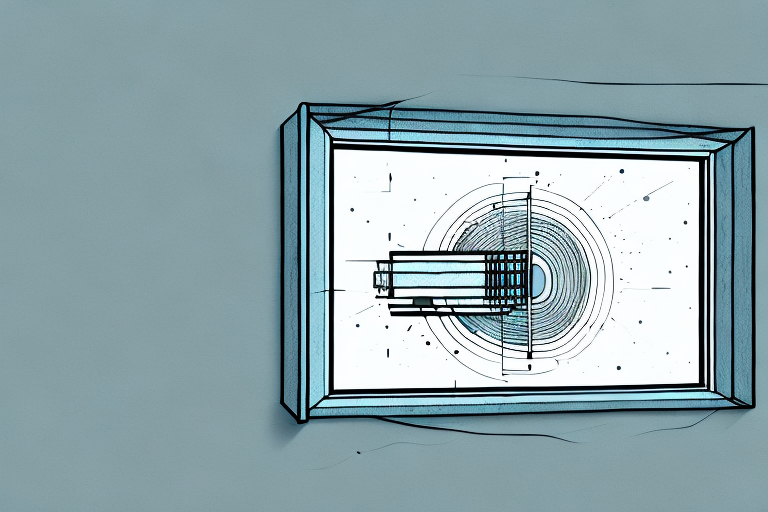In today’s fast-paced and bustling world, finding peace and quiet can be a challenge. Whether you live in a noisy neighborhood, near a busy street, or even have a housemate or family member who loves to blast their music, excessive noise can be a major source of stress and frustration. That’s where window soundproofing tape comes in. In this comprehensive guide, we will explore the importance of soundproofing your windows, how window soundproofing tape works, the different types available, step-by-step instructions for installation, benefits, factors to consider when choosing the right tape, common mistakes to avoid, and even tips on maintenance and cleaning. So without further ado, let’s dive in!
The Importance of Soundproofing Your Windows
Noise pollution is a pervasive problem in our modern society. It can lead to sleep disturbances, reduced focus, increased stress levels, and even long-term health issues. One of the primary sources of noise infiltration in homes is through windows. Normal glass windows are not designed to block out sound effectively. They can transmit and amplify exterior noise, making it difficult to find respite within the sanctuary of your home. Window soundproofing tape provides a simple and cost-effective solution to reduce noise transmission through windows, allowing you to create a quieter and more peaceful living environment.
Window soundproofing tape is a specially designed adhesive tape that is applied to the edges of windows to create an airtight seal. This seal helps to block out noise from entering your home, providing a significant reduction in sound transmission. The tape is typically made from a combination of materials, such as foam or rubber, that have sound-absorbing properties. When applied correctly, window soundproofing tape can effectively reduce noise levels by up to 50%, creating a more peaceful and comfortable living space.
How Does Window Soundproofing Tape Work?
Window soundproofing tape is specifically designed to absorb and dampen sound waves, reducing their transmission through windows. The tape is typically made of a layer of dense, sound-absorbing material, such as rubber or foam, which is capable of preventing sound vibrations from passing through. The adhesive backing allows the tape to adhere securely to the window frame, sealing any gaps and preventing noise from entering or escaping.
In addition to its sound-absorbing properties, window soundproofing tape also provides thermal insulation. The dense material helps to block drafts and prevent heat transfer, making it an effective solution for improving energy efficiency in homes and buildings.
Furthermore, window soundproofing tape is easy to install and remove, making it a convenient option for temporary soundproofing needs. It can be applied to windows in minutes and can be easily removed without leaving any residue behind. This makes it a popular choice for renters or those who want a non-permanent solution to reduce noise.
Different Types of Window Soundproofing Tapes
When it comes to window soundproofing tape, there is a range of options available to suit different needs and preferences. One common type is the self-adhesive foam tape, which is easy to apply and provides excellent sound absorption. Another option is the non-adhesive rubber tape, which is highly durable and resistant to wear and tear. Additionally, there are also specialized tapes designed for specific purposes, such as blocking out external noise or enhancing energy efficiency. Consider your requirements and the specific characteristics of each tape when choosing the right one for your windows.
One specialized type of window soundproofing tape is the magnetic tape. This type of tape is designed to create an airtight seal around the edges of the window, preventing any air leaks and reducing noise transmission. Magnetic tapes are particularly effective for soundproofing windows in areas with high levels of external noise, such as near busy roads or airports. They are also easy to install and remove, making them a convenient option for temporary soundproofing needs. When using magnetic tape, ensure that your window frames are made of a material that is compatible with magnets, such as steel or aluminum.
Step-by-Step Guide to Installing Window Soundproofing Tape
Installing window soundproofing tape is a relatively straightforward process that can be done by anyone with a little DIY knowledge. Here is a step-by-step guide to help you through the installation:
1. Begin by cleaning the window frames thoroughly to ensure proper adhesion of the tape.
2. Measure the length of each window frame and cut the soundproofing tape accordingly. It’s better to have slightly more tape than necessary.
3. Remove the backing from the tape and apply it carefully to the window frame, making sure to press it firmly and evenly to achieve a secure seal.
4. Repeat the process for each window, covering all gaps and openings.
5. After installation, double-check that the tape is securely attached and has created an airtight seal.
Following these steps will help you effectively soundproof your windows using the tape, reducing noise infiltration and enjoying a quieter living space.
6. It is important to note that window soundproofing tape is not a permanent solution and may need to be replaced over time. Regularly inspect the tape for any signs of wear or damage, and replace it as needed to maintain its effectiveness.
Benefits of Using Window Soundproofing Tape
The benefits of using window soundproofing tape go far beyond just reducing noise. Let’s take a closer look at some of the advantages:
1. Improved Sleep Quality: Blocking out external noise ensures a more peaceful and uninterrupted sleep, promoting better overall health and well-being.
2. Increased Focus and Productivity: Minimizing distractions from outside noise allows for better concentration, heightened productivity, and improved work or study environments.
3. Enhanced Privacy: Soundproofing your windows can also help preserve your privacy by preventing conversations or sounds from being overheard.
4. Energy Efficiency: In addition to soundproofing, some window tapes also provide insulation benefits, reducing heat loss or gain through windows and enhancing energy efficiency.
5. Cost-effective Solution: Compared to other soundproofing methods, window soundproofing tape offers a cost-effective solution that is easy to install and maintain.
6. Versatile Application: Window soundproofing tape can be used on various types of windows, including single-pane, double-pane, and sliding windows. It is also suitable for both residential and commercial buildings, making it a versatile solution for different environments.
Factors to Consider When Choosing the Right Window Soundproofing Tape
When selecting window soundproofing tape, there are several essential factors to consider:
1. Sound Absorption: Look for tapes specifically designed for sound absorption and dampening.
2. Adhesive Strength: Ensure that the tape has a strong adhesive backing to provide a secure and long-lasting seal.
3. Durability: Consider the longevity of the tape, especially if you live in an area with extreme temperatures or high humidity.
4. Compatibility: Check if the tape is compatible with the material of your window frames to ensure proper adhesion.
5. Ease of Installation: Opt for tapes that are easy to install and remove, allowing for hassle-free application and future adjustments if needed.
6. Width and Length: Take into account the width and length of the tape to ensure it can cover the entire perimeter of your window effectively.
7. Noise Reduction Rating (NRR): Look for tapes with a high NRR, which indicates their ability to reduce noise levels effectively.
Common Mistakes to Avoid When Applying Window Soundproofing Tape
While installing window soundproofing tape might seem like a simple task, there are a few common mistakes you should avoid to ensure optimal results:
1. Inadequate Cleaning: Failing to clean the window frames properly can prevent the tape from adhering securely.
2. Insufficient Coverage: Be thorough when applying the tape and ensure all gaps and openings are sealed to prevent noise leakage.
3. Overlapping the Tape: Avoid overlapping the tape, as this can create uneven surfaces and compromise its effectiveness.
4. Using the Wrong Tape: Choosing a tape that is not specifically designed for soundproofing can lead to subpar results.
By being mindful of these common mistakes, you can ensure that your window soundproofing tape properly serves its intended purpose.
5. Improper Application Technique: It is important to apply the window soundproofing tape correctly to maximize its effectiveness. Make sure to follow the manufacturer’s instructions and apply the tape evenly and firmly to ensure a proper seal.
6. Neglecting Regular Maintenance: While window soundproofing tape can provide immediate noise reduction, it is essential to regularly inspect and maintain the tape to ensure its long-term effectiveness. Check for any signs of wear or damage and replace the tape if necessary.
How to Maintain and Clean Window Soundproofing Tape
Maintaining and cleaning window soundproofing tape is relatively simple. Here are a few tips to help you keep it in good condition:
1. Regularly dust or vacuum the tape to remove any accumulated dirt or debris.
2. For more stubborn stains, gently wipe the tape with a damp cloth using mild soap and water.
3. Avoid using abrasive cleaners or rough materials that could damage the tape’s surface.
By incorporating these practices into your cleaning routine, you can ensure that your window soundproofing tape remains effective and long-lasting.
4. In addition to regular cleaning, it is important to inspect the tape for any signs of wear or damage. Look for any tears, cracks, or peeling edges, as these can compromise the effectiveness of the tape. If you notice any issues, it is recommended to replace the tape to maintain optimal soundproofing.
5. When cleaning the tape, make sure to avoid excessive moisture. Excess water or liquid cleaners can seep into the tape and cause it to lose its adhesive properties. Use a damp cloth or sponge with minimal water to gently clean the surface of the tape.
Enhancing Energy Efficiency with Window Soundproofing Tape
Aside from its primary function of noise reduction, some window soundproofing tapes also provide additional energy-saving benefits. By sealing gaps and openings, these tapes can minimize heat loss during the winter and prevent heat gain in the summer, making your home more energy-efficient. This can result in reduced heating and cooling costs, contributing to both your wallet and the environment.
In conclusion, window soundproofing tape offers a practical and cost-effective solution to combat noise pollution and create a quieter, more serene living environment. By understanding its importance, how it works, and the different types available, you can make an informed decision when purchasing and installing the tape. Moreover, being aware of common mistakes to avoid, proper maintenance practices, and the additional energy-saving benefits will help you maximize the effectiveness and longevity of your window soundproofing tape. So why wait any longer? Invest in window soundproofing tape today and say goodbye to the incessant noise that threatens your peace and tranquility.
Furthermore, window soundproofing tape can also help improve the overall insulation of your home. By creating a tight seal around your windows, it can prevent drafts and air leakage, which can lead to energy wastage. This added insulation can make your home more comfortable by maintaining a consistent temperature throughout the year, reducing the need for excessive heating or cooling. Not only does this contribute to energy efficiency, but it also enhances the overall comfort and livability of your space.



